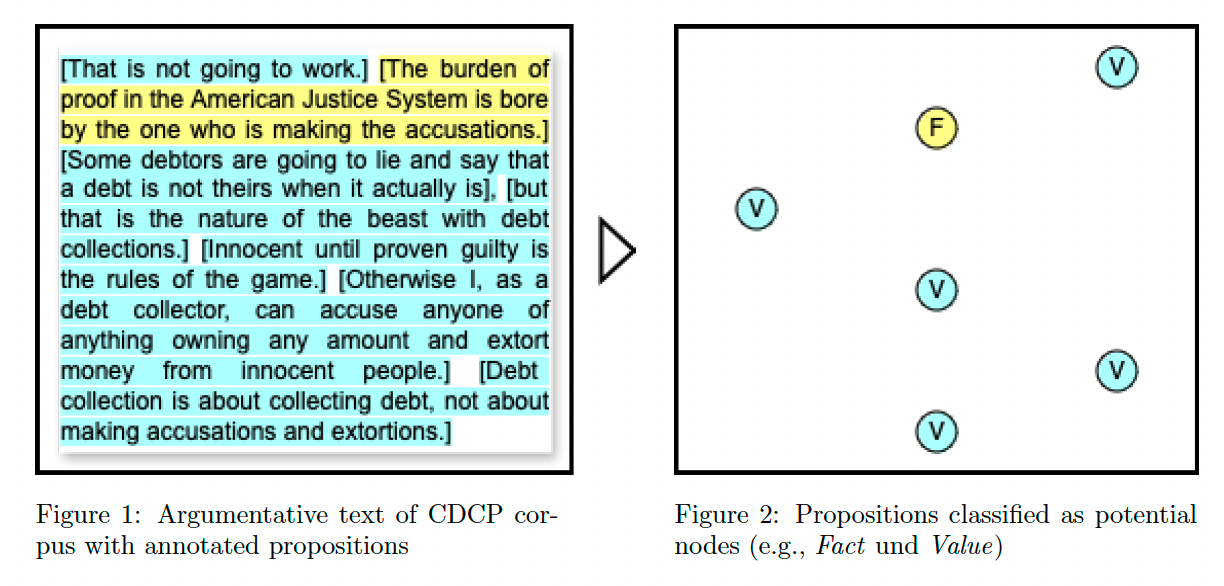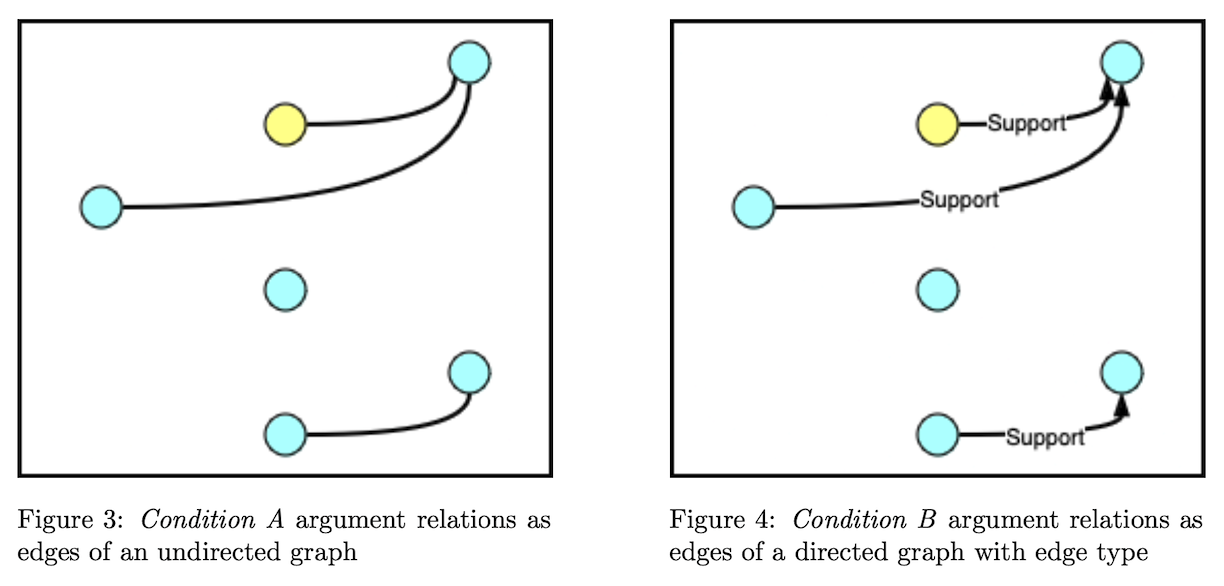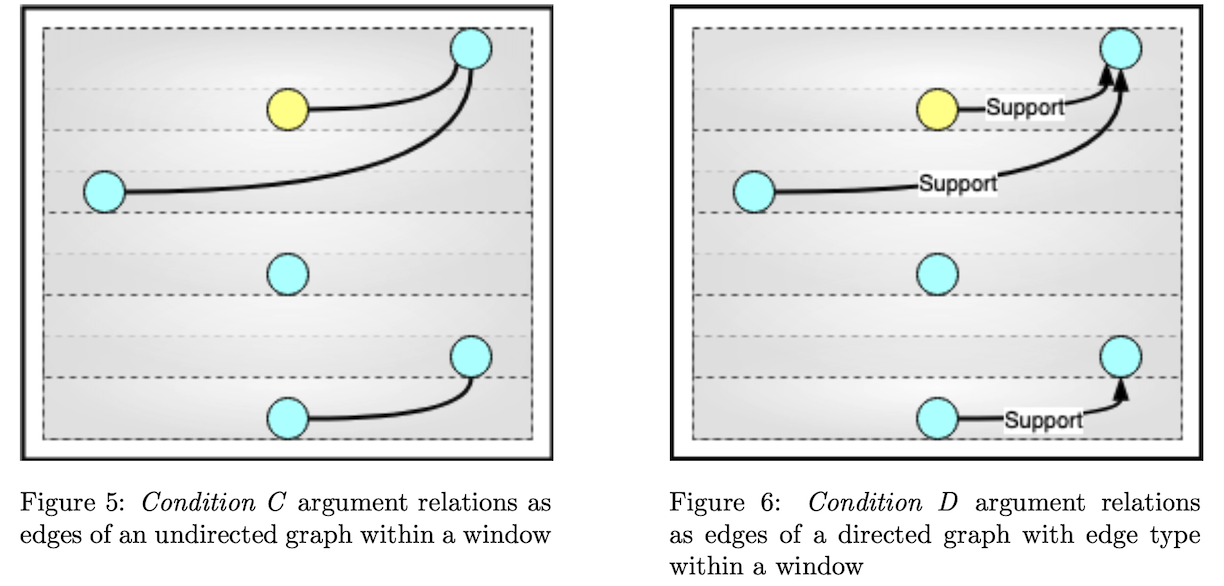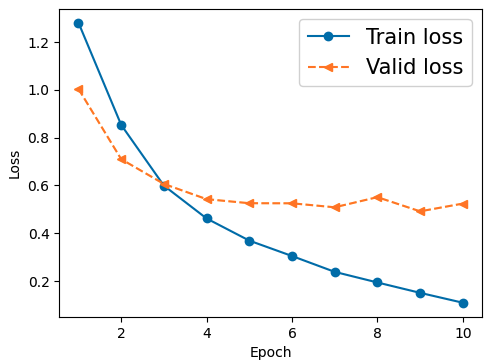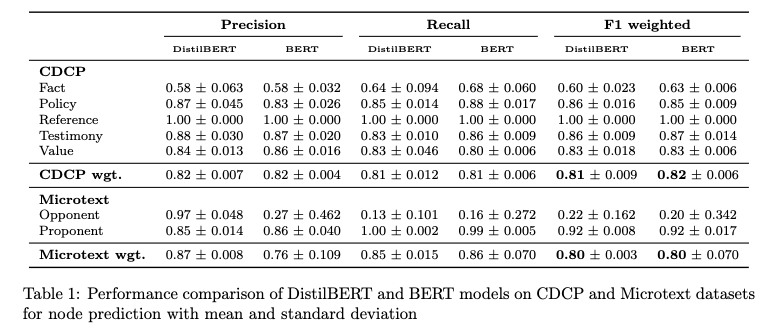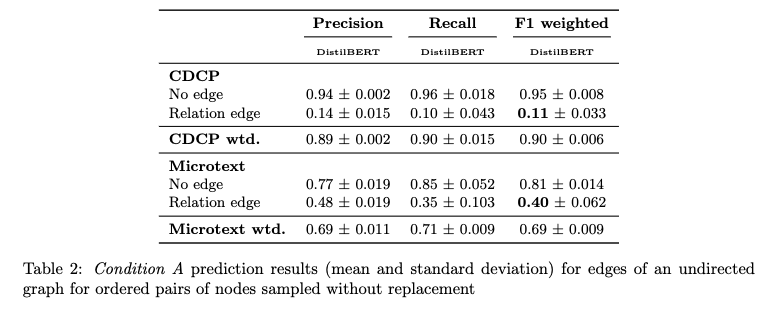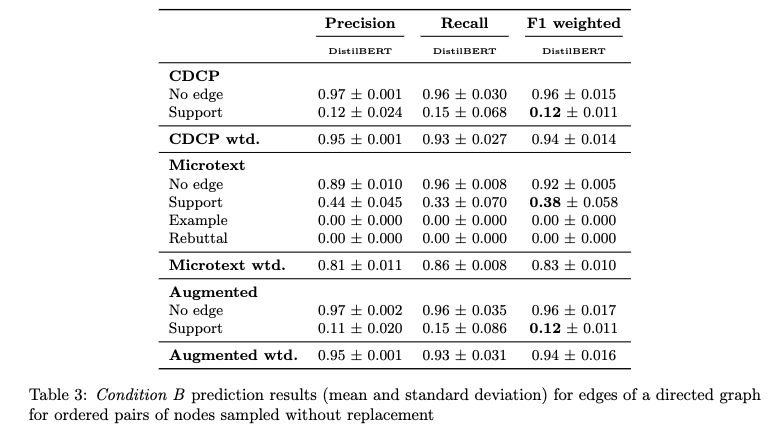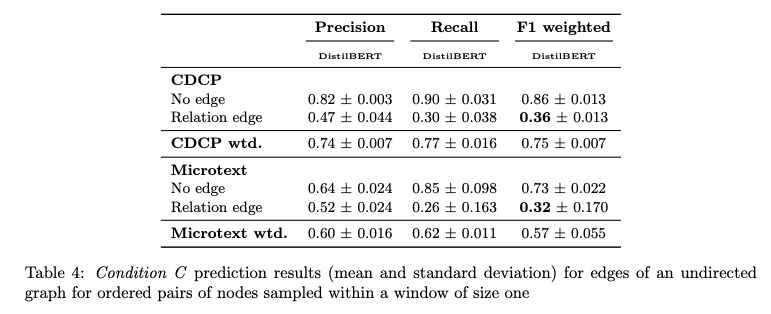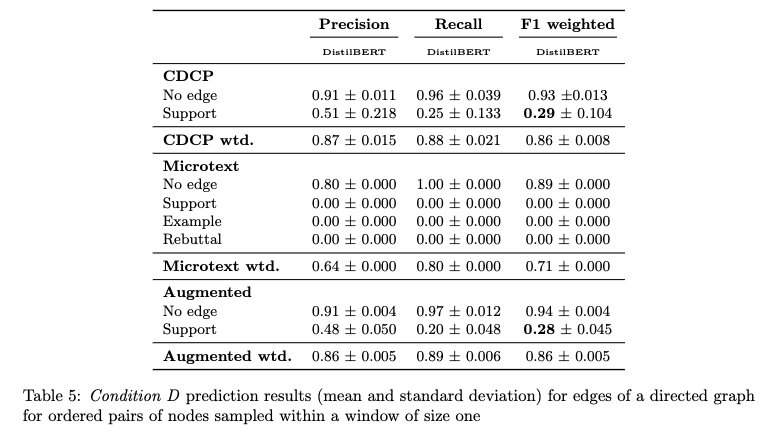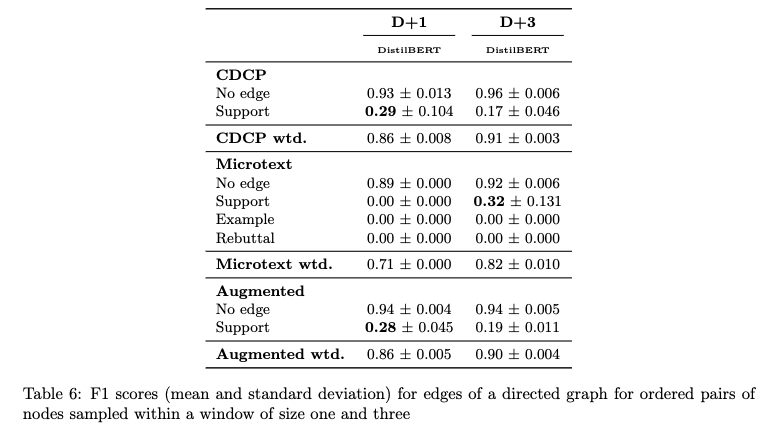The goal of this project is to classify propositions (task one) and
their argumentative relations (task two). This is being done with the
following assumptions: A proposition (e. g., of type Value or
Proponent -- depending on the annotation of the corpus data) can be
understood as a potential node of an argument graph; an argument relation can
be understood as a potential edge between two such nodes. To identify both
propositions and relations, different classification tasks are introduced
(consider Experimental setting).
Argumentation is loosely defined here as the communicative practice of presenting reasons and evidence to support or oppose claims, that is controversial statements. For example, such statements could be bolstered with additional reasons or challenged with counter-evidence. From the relational structure of propositions, we can derive the function of the proposition, that is, whether they serve as claims or premises. However, this is not the focus of the present work as it is limited to task one and task two. But these tasks allow to easily infer the argumentative function in the previously mentioned fashion.
This project is being realized with two different corpora of annotated arguments, the Cornell eRulemaking Corpus – CDCP and the Argumentative Microtext Corpus (consider Data).
Three hypotheses are evaluated with the test results from the trained
classifiers and Welch's one-tailed t-tests (consider
results/hypotheses_test.R) given their respective tasks.
H1 Model size) The classification of nodes, that is propositions, can be improved with training and testing on the larger BERT model compared to DistilBERT.
CDCP: H1 is rejected.
Microtext: H1 is rejected.
H2 Window clipping) The classification of directed and typed edges, that is, argument relations that are not None, can be improved when training and testing are done with a window for neighboring nodes with a window-size of d=1.
CDCP: H2 can be confirmed for support relations with a p-value of 0.0526
and
a 95% confidence interval.
Microtext: H2 is rejected for all relation types.
H3 Data augmentation) The classification of directed and typed edges, that is, argument relations that are not None, can be improved when training and testing are done with a window for neighboring nodes with a window-size of d=1 AND when the data of the corpus is augmented.
CDCP: H3 is rejected.
Microtext: H3 is rejected.
Terminology:
EDU = elementary discourse unit
ADU = argumentation discourse unit
The project was developed with Python 3.11. The required dependencies
can be installed with pip install -r requirements.txt --upgrade. The
Jupyter notebooks for the fine-tuning pipelines are written to be used in
Google Colab.
The corpora with annotated arguments used in the experiments are
automatically downloaded and saved at data/ through the notebooks. For
references, please consider References.
-
Cornell eRulemaking Corpus – CDCP, available here: https://facultystaff.richmond.edu/~jpark/data/cdcp_acl17.zip.
-
Argumentative Microtext Corpus Part One, available here: https://github.com/peldszus/arg-microtexts/archive/refs/heads/master.zip
-
Argumentative Microtext Corpus Part Two, available here: https://github.com/discourse-lab/arg-microtexts-part2/archive/refs/heads/master.zip
The corpus statistics are reported in the respective Jupyter notebooks.
Classifying propositions and relations is being realized with different scenarios. Consider the following figures:
The classifiers used for the experiments are fine-tuned BERT and DistilBERT models implemented by HuggingFace. AdamW with a 5e^-5 learning rate was chosen as the optimizer. The batch size of each model training was 128. All models were trained for five epochs and the learning rate was linearly reduced over the training steps. All models are trained and tested three times with different random seeds.
Five epochs were considered to be sufficient after manual evaluation has shown that the models validation losses plateaued after about five epochs.
The training was performed using an NVIDIA L4 GPU, and an NVIDIA A100-SXM4-40GB GPU when resources were available.
The following results are reported for the experiments.
(1) Joonsuk Park and Claire Cardie. 2018. A Corpus of eRulemaking User Comments for Measuring Evaluability of Arguments. In Proceedings of the Eleventh International Conference on Language Resources and Evaluation (LREC 2018), Miyazaki, Japan. European Language Resources Association (ELRA).
(2) Andreas Peldszus and Manfred Stede. An annotated corpus of argumentative microtexts. In D. Mohammed, and M. Lewinski, editors, Argumentation and Reasoned Action - Proc. of the 1st European Conference on Argumentation, Lisbon, 2015. College Publications, London, 2016
(3) Maria Skeppstedt, Andreas Peldszus and Manfred Stede. More or less controlled elicitation of argumentative text: Enlarging a microtext corpus via crowdsourcing. In Proc. 5th Workshop in Argumentation Mining (at EMNLP), Brussels, 2018
